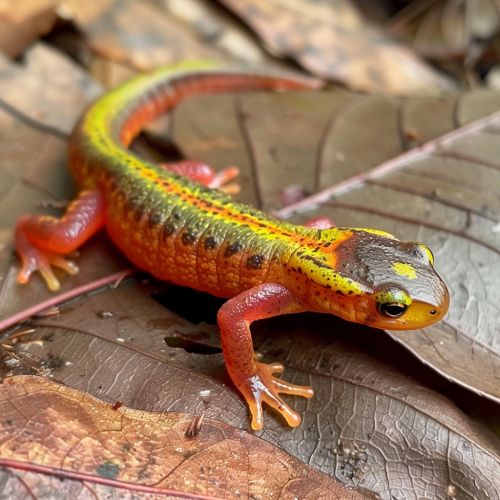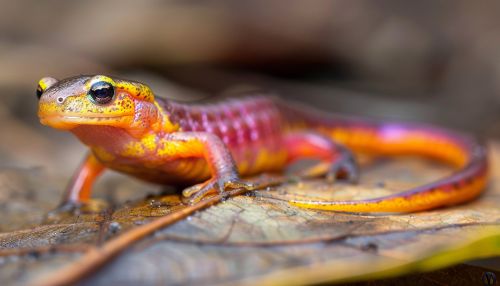Newt
Introduction
Newts are small, usually brightly colored semiaquatic salamanders belonging to the family Salamandridae, found in North America, Europe, and Asia. Newts metamorphose through three distinct developmental life stages: aquatic larva, terrestrial juvenile (known as an "eft"), and adult. They have the ability to regenerate limbs, eyes, spinal cords, hearts, intestines, and upper and lower jaws.
Classification and Distribution
Newts are classified in the subfamily Pleurodelinae of the family Salamandridae, and are found in North America, Europe and Asia. Newts are divided into the genera Triturus, Lissotriton, Ichthyosaura, Ommatotriton, Neurergus, Notophthalmus, Taricha, and Cynops.


Physical Characteristics
Newts are known for their bright skin colors and patterns, which serve as warning to predators of their toxic skin secretions. Adult newts have a lizard-like body and may be either fully aquatic, living permanently in the water, or semiaquatic, living terrestrially but returning to the water each year to breed.
Life Cycle
Newts have a complex life cycle consisting of three stages. The first stage is the aquatic larval stage, where they hatch from eggs laid in water. The larvae are tadpole-like in appearance, but unlike frog tadpoles, they have visible legs.
The next stage is the terrestrial juvenile stage, also known as the "eft" stage. During this stage, which can last for several years, the juvenile newt lives on land.
The final stage is the adult stage, where the newt reaches sexual maturity and returns to the water to breed. Some species of newts can live for several decades.
Behavior and Ecology
Newts are largely nocturnal animals. They are carnivorous, feeding on a variety of prey such as insects, worms, and small crustaceans.
Newts have a variety of defensive strategies including toxic skin secretions, the ability to shed their tails when threatened, and a display behavior known as the "unken reflex" where they arch their bodies and display their brightly colored undersides to deter predators.
Reproduction
Newts have a unique courtship ritual, which involves a dance by the male, who then deposits a spermatophore, which the female picks up and uses to fertilize her eggs. Females lay their eggs individually, usually attaching them to aquatic plants.
Conservation
Many species of newts are facing threats due to habitat loss, pollution, and disease. Some species are also threatened by the pet trade. Conservation efforts for newts include habitat protection, pollution control, and in some cases, captive breeding programs.
